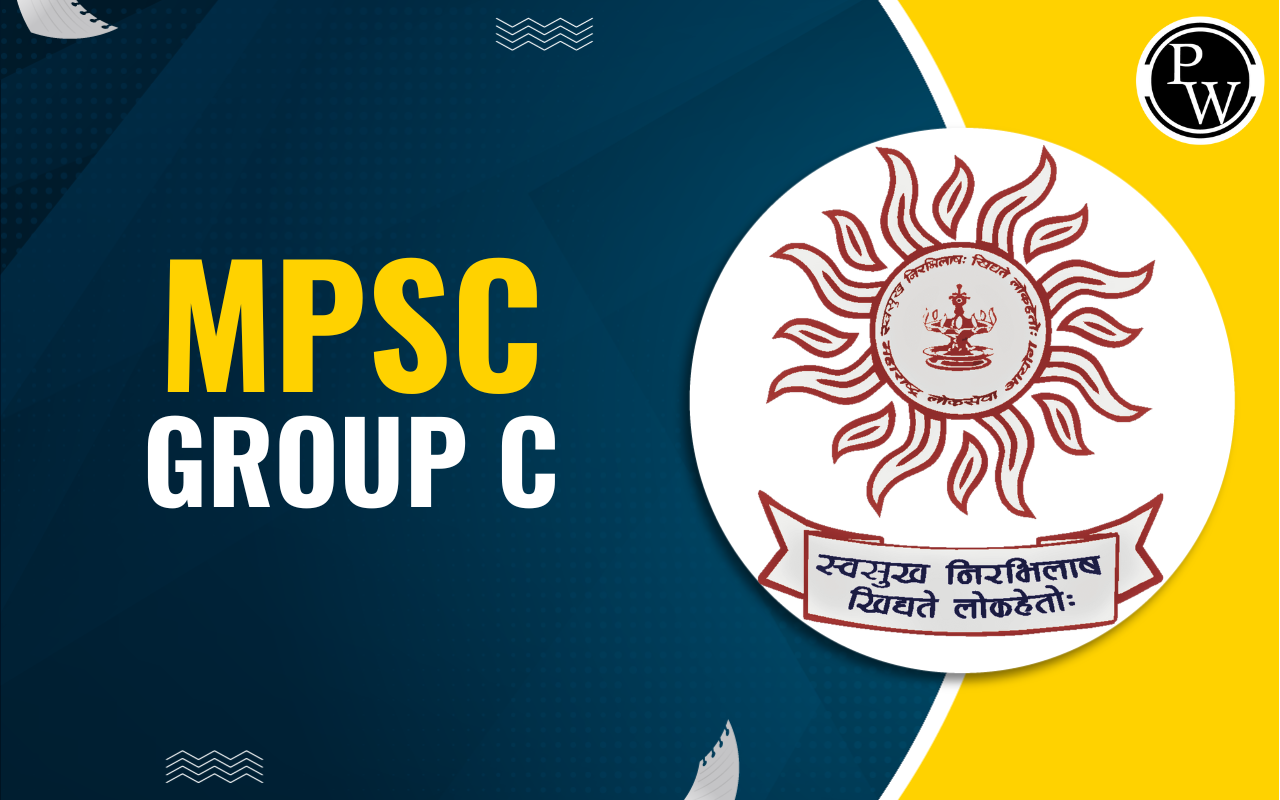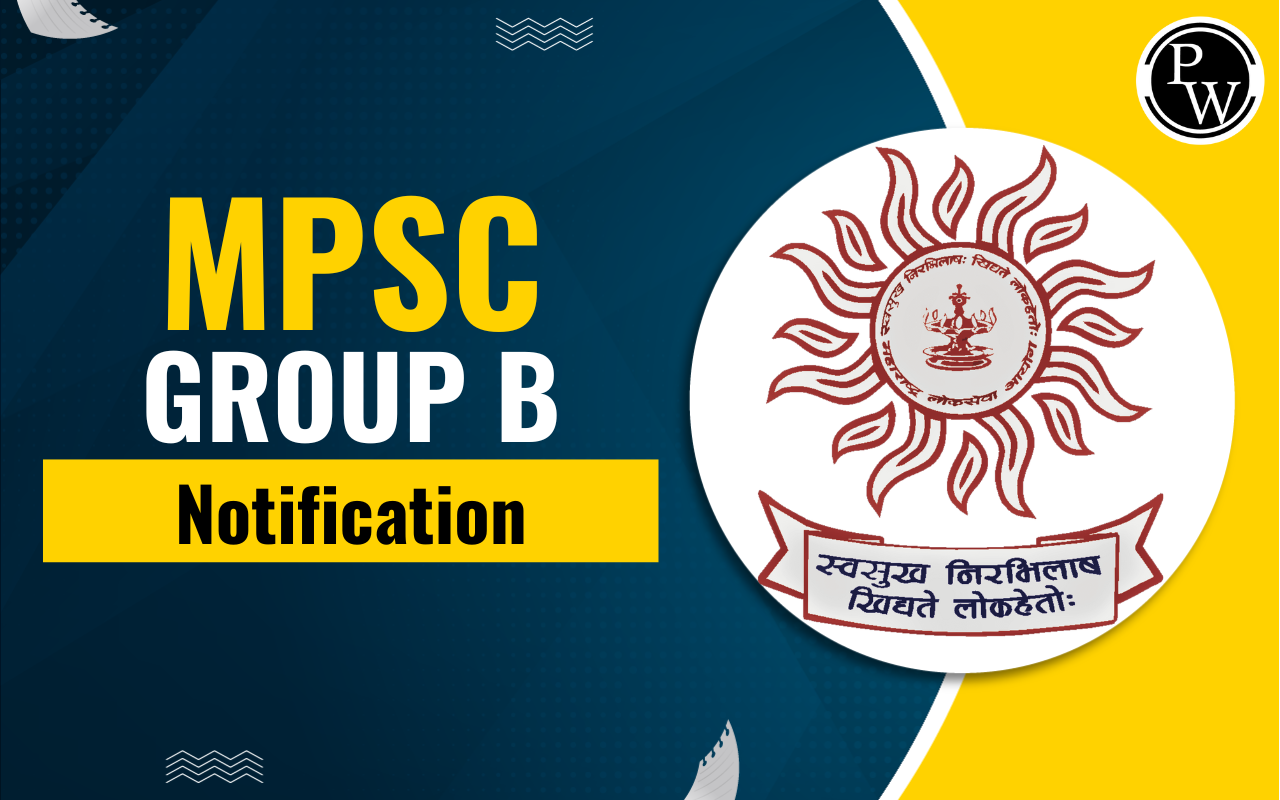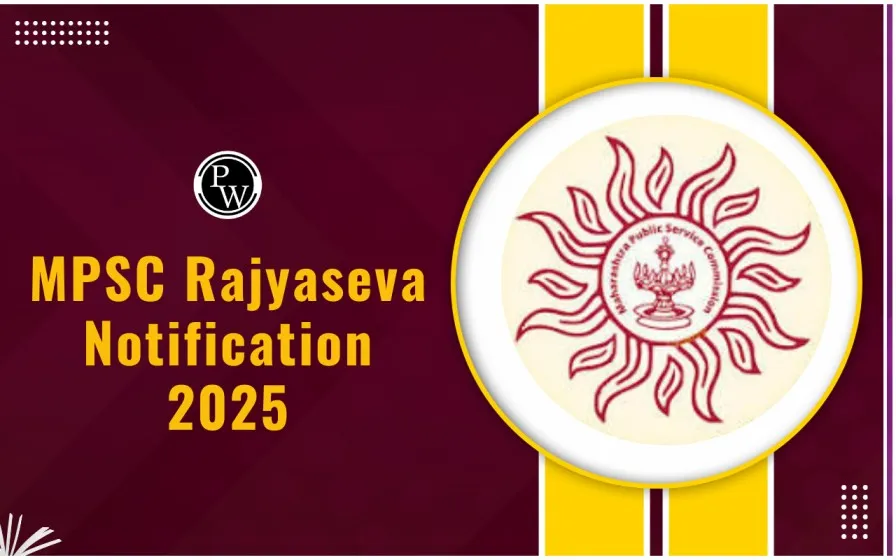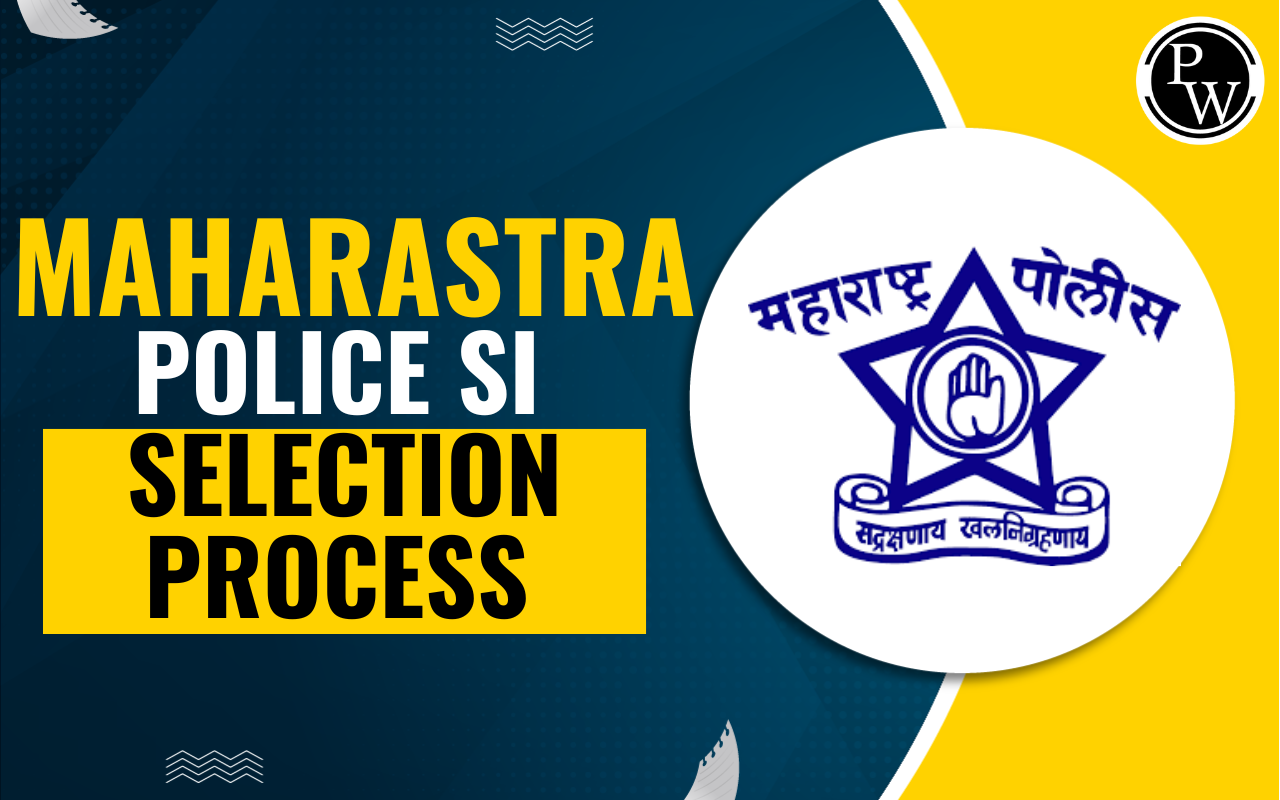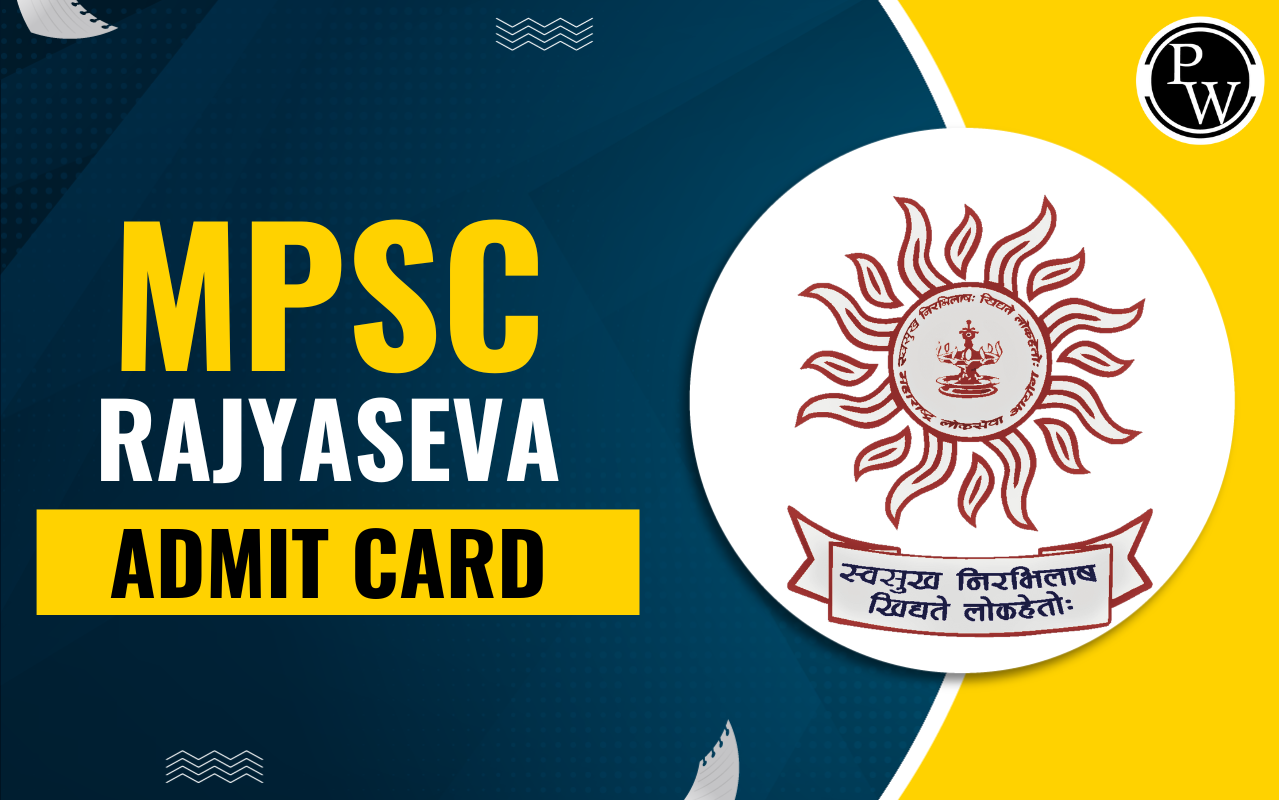
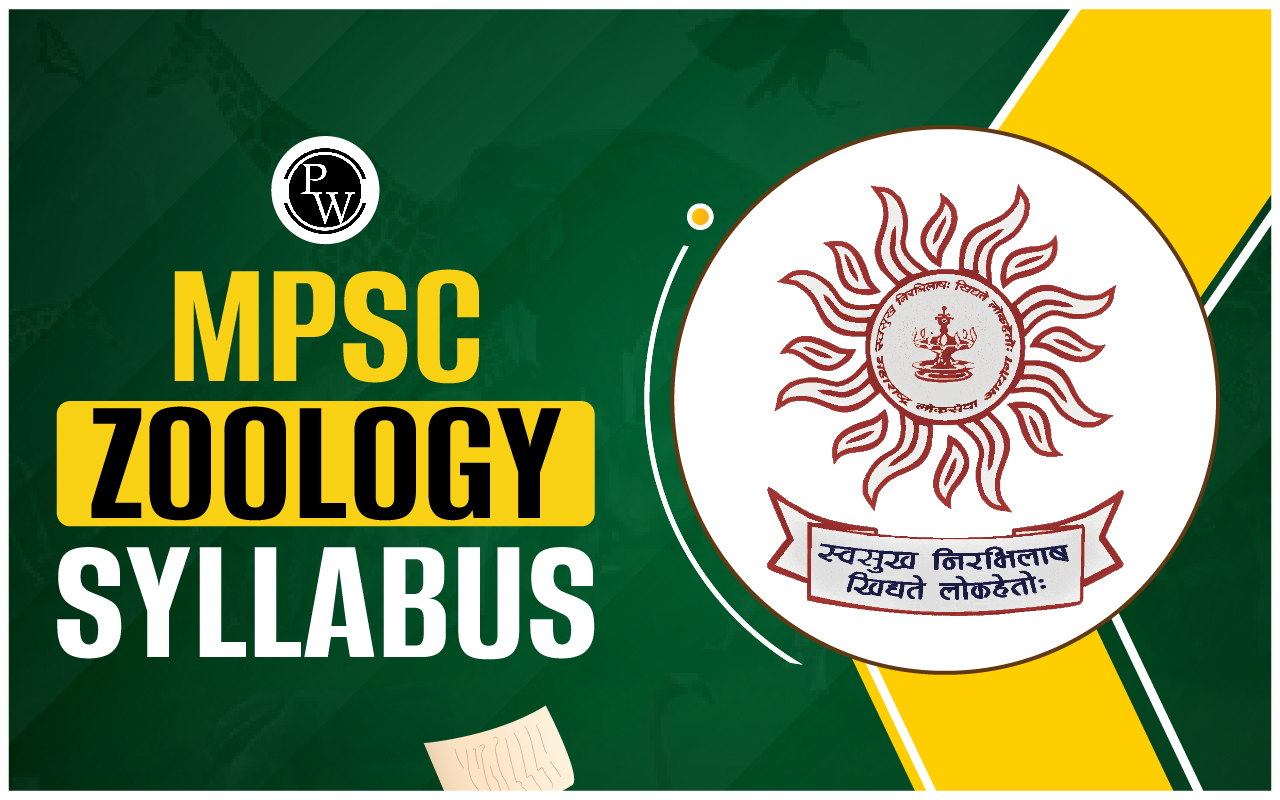
MPSC Zoology Syllabus 2024: The Maharashtra Public Service Commission has released the MPSC Zoology Syllabus 2024 with the official MPSC 2024 notification. The candidates who are going to choose Zoology as their option subject go through the topics and sub-topics of the syllabus. The MPSC Exam Syllabus and Exam Pattern assist applicants in determining what is and is not significant as well as how to prepare for the examination procedure.
To do well in the exam, applicants need to thoroughly prepare with a well-defined, well-structured plan. The MPSC selection process consists of three steps that candidates must pass: the preliminary exam, the main exam, and the interview. They should use well-chosen professional guidance in a succinct and rational manner to prepare for the test.MPSC Zoology Syllabus 2024
The MPSC Zoology Syllabus 2024 is divided into two papers paper 1 with subject code 1011 and paper 2 with subject code 1059. The candidates can choose from several optional subjects which include Zoology. The candidates can prepare for the MPSC 2024 Zoology from this article. Since Zoology is a highly specialized subject for MPSC, individuals who have studied Zoology at the degree level should consider this course. The topics covered in the MPSC Syllabus for this subject include states of matter, different kinds of reactions, and atomic structure. The primary exam's MPSC Zoology Syllabus questions come from the graduation level.MPSC Zoology Syllabus Section Wise 2024
The candidates can go through the section-wise MPSC Zoology Syllabus 2024 from the table given below. Paper 1 includes subject code 1011 with topics like atomic structure, chemical bonding, solid state, liquid state, gaseous state, and transport phenomenon. Paper 2 includes subject code 1059 with topics like Mould modification, parts in insects, metamorphosis in insects and its hormonal regulation, social behavior of Apis and termites, larval forms and parasitism in Crustacea, vision and respiration in arthropods (Prawn, cockroach, and scorpion). The written examination is of 1750 marks with 9 question papers and the interview and personality test includes 272 marks. This constitutes the MPSC total Marks 2024 which is 2025.MPSC Zoology Syllabus 2024 Paper 1
The candidates can go through the details of the MPSC Zoology Syllabus 2024 Paper 1 from the table given below. Paper 1 includes Relationships and classification of different phyla down to subclasses: Radiata and Bilateria, Protostomes and Deuterostomes, and Acoelomate and Coelomate; The symmetrical status of Protista, Parazoa, Onychophora, and Hemichordata, etc. Go through the syllabus details mentioned below to prepare effectively for the upcoming examination.| MPSC Zoology Syllabus 2024 Paper 1 | |
| Paper 1: Subject Code 1011 | Subjects |
| Non-Chordata and Chordata | (a) The arrangement and connections between different phyla up to subclasses, such as Radiata and Bilateria, Protostomes and Deuterostomes, and Acoelomate and Coelomate; The symmetrical status of Protista, Parazoa, Onychophora, and Hemichordata. (a) Protozoa: General characteristics and life cycle of Paramaecium, Monocystis; locomotion, feeding, reproduction, sex. Leishmania and Plasmodium. (c) Reproduction, canal system, and skeleton of Porifera. (d) Cnidaria: general characteristics, life history of Obelia and Aurelia, coral reefs and their creation, polymorphism, defensive structures and their mechanism. (e) Platyhelminthes: Parasitic adaptability; general characteristics, life cycle, and pathogenic signs of Taenia and Fasciola (f) Nemathelminthes: Overview, life cycle, and Ascaris and Wuchereria's adaptability as parasites. (g): Coelom and metamerism; polychaete life modes; general characteristics and life cycle of Nereis, earthworm, and leach. (h) Arthropoda: Mould modification, parts in insects (cockroach, mosquito, housefly, honey bee, and butterfly), metamorphosis in insects and its hormonal regulation, social behavior of Apis and termites, larval forms and parasitism in Crustacea, vision and respiration in arthropods (Prawn, cockroach, and scorpion). (i) Molluscs: The feeding, breathing, moving, general characteristics, and life cycle of Lamellidens, Pila, and Sepia. Gastropod torsion and detorsion. (j) Echinodermata: Asterias' larval morphologies, general characteristics, breathing, feeding, and movement. (k) Protochordata: General characteristics and life cycle of Branchiostoma and Herdmania; origin of chordates. (l) Pisces: Migration, respiration, and movement. (m) Amphibians: Paedomorphosis, parental care, and the genesis of tetrapods. (n) Reptilia; genesis of reptiles, varieties of skulls, Sphenodon and crocodile status. (o) Aves: Migration, flight adaption, and the origin of birds. (p) Mammalia: The origin of mammals, their dental structure, the basic characteristics of pouched, aquatic, and egg-laying mammals, as well as their relationships with the endocrine glands (pituitary, thyroid, parathyroid, adrenal, pancreatic, and gonads). (q) A comparison of the functional anatomy of different vertebrate systems. The endoskeleton, digestive system, respiratory system, circulatory system (including the heart and aortic arches), urinogenital system, brain, and sense organs (eye and ear) are among the organs that comprise the body. |
| Ecology | (a) Biosphere: definition of the biosphere, biomes, biogeochemical cycles, greenhouse effect, ecological succession, biomes and ecotones, and community ecology; human-induced changes in the atmosphere. (b) The concept of an ecosystem, including its types, structures, functions, ecological succession, and ecological adaptation. (c) Population dynamics; features; stabilization of the population. (d) The conservation of natural resources' biodiversity and diversity. (e) The Indian Wildlife. (f) Sustainable development via remote sensing. (g) Biodegradation of environmental materials; pollution, its effects on the biosphere, and ways to counteract it. |
| Ethology | (a) Behavior: Sign stimuli, learning and memory, instinct, habituation, training, imprinting, and sensory filtering. (b) Hormones' involvement in drive; pheromones' role in alarm propagation; crypsis; predator detection; predator strategies; primate social hierarchies; insect social organization; (c) Biological rhythms: biological clock, tidal, seasonal, and circadian rhythms; orientation, navigation, and homing. (d) Techniques for examining animal behavior, such as kinship, sexual conflict, selfishness, and altruism. |
| Economic Zoology | (a) Pearl, prawn, carp, vermiculture, apiculture, sericulture, lac culture, and so on. (b) The main infectious diseases (AIDS, cholera, tuberculosis, malaria, and filaria), as well as their pathogens, vectors, and preventative measures. (c) Diseases affecting cattle and other livestock, along with the helminth pathogens and vectors (ticks, mites, Tabanus, and stromoxys). (d) Pests of rice (Sitophilus oryzae), oil seed (Achaeajanata), and sugarcane (Pyrilla perpusilla). f) Animals that are transgenic. (f) Gene therapy, human genetic illness, genetic counseling, and medical technologies. (g) Biotechnology for forensics. |
| Biostatistics | Experimental design; null hypothesis; distribution and measure of central tendency; correlation, regression; chi square; student test; F-test (one-way & two-way F-test). |
MPSC Zoology Syllabus 2024 Paper 2
The candidates can go through the details of the MPSC Zoology Syllabus 2024 Paper 1 from the table given below. Paper 2 includes Cell division (mitosis and meiosis), mitotic spindle and mitotic apparatus, chromosome movement, chromosomal type polytene, and lamp brush are examples of the structure and function of a cell and its organelles, etc. Go through the syllabus details mentioned below to prepare effectively for the upcoming examination.| MPSC Zoology Syllabus 2024 Paper 2 | |
| Paper 2: Subject Code 1059 | Subjects |
| Cell Biology | (a) Cell division (mitosis and meiosis), mitotic spindle and mitotic apparatus, chromosome movement (chromosome type polytene and lampbrush), heterochromatin organization, and cell cycle regulation. Structure and function of the cell and its organelles (nucleus, plasma membrane, mitochondria, Golgi bodies, endoplasmic reticulum, ribosomes, and lysosomes). (b) Protein foldings and transport; nucleic acid topology; DNA motif; DNA replication; transcription; RNA processing; and translation. |
| Genetics | Genes, split genes, genetic control, and genetic code are modern concepts. (a) The evolution of sex chromosomes, sex determination in humans and Drosophila. (c) Mendel's rules of inheritance, multiplication of alleles, recombination, linkage, blood group genetics, pedigree analysis, and hereditary illnesses in humans. (d) Mutagenesis and mutations. (e) Transgenics, artificial chromosomes as vectors, plasmids, cosmids, recombinant DNA technologies, DNA cloning, and whole animal cloning (principles and procedures). (f) Prokaryotes and eukaryotes: gene expression and control. (g) Defects in the signaling system, cell death, signal molecules, and their effects. |
| Evolution | (a) Origin of life theories.Natural selection, the function of mutation in evolution, evolutionary patterns, molecular drive, mimicry, variety, isolation, and speciation are among the (b) theories of evolution (c) Evolution of humans, horses, and elephants based on fossil evidence. (d) Law of Hardy-Weinberg. (e) Continental drift and dispersal of animals. |
| Systematics | Molecular taxonomy, biodiversity, cladistics, international code, and zoological nomenclature. |
| Biochemistry | (a) The composition and functions of proteins, amino acids, lipids, fatty acids, cholesterol, and nucleic acids. bioenergetics. (b) The Krebs cycle and glycolysis, oxidation and reduction, oxidative phosphorylation, energy release and conservation, ATP, and the structure and function of cyclic AMP. (c) The biosynthesis, functioning, and classification of hormones (peptide and steroid hormones). (d) Types and modes of action of enzymes. (e) Co-enzymes and vitamins. (f) Immunity and immunoglobulin. |
MPSC Zoology Exam Pattern 2024
The candidates can go through the MPSC Zoology Exam Pattern 2024 from the table given below. The exam pattern includes the number of questions, duration of the examination, standards, medium of the paper, and the nature ofhe paper. Prelims Exam:- Two exams, Paper I (Compulsory) and Paper II (Qualifying), each with a weight of 200 marks, will comprise the MPSC preliminary examination.
- The duration of this MPSC exam is two hours.
- The MPSC exam does not include negative marking.
| MPSC Zoology Exam Pattern 2024 for Prelims | |||||
| Paper No. | Marks | Duration | Standard | Medium | Nature of Paper |
| Paper I (Compulsory) | 200 | Two Hours | Degree | Marathi & English | ObjectiveType |
| Paper II (Qualifying) | 200 | Two Hours | Topic No.(1) to (5) Degree level Topic No.(6) class X level Topic No. (7) class X/XII level | ||
- A total of 1750 marks will be awarded for the main exam.
- There are nine papers in the MPSC primary exam.
- The MPSC main exam consists of nine papers: two candidate-selected optional papers, four general studies papers, one essay, one Marathi, and one English paper.
- Only English will be used to try the MPSC exam.
- The type of question paper will be descriptive and conventional in nature.
| MPSC Zoology Exam Pattern 2024 for Mains | ||||||
| Paper No. and Subject Code | Subject | Total Marks | Standard | Medium | Time Duration | Qualifying/Mandatory |
| Paper 1 (Code -1001) | Marathi | 300 | Matriculation | Marathi | 3 hours | (Qualifying with 25% marks) |
| Paper 2 (Code -1002) | English | 300 | Matriculation | English | 3 hours | |
| Related Links for the MPSC Exam 2024 | |
| MPSC Notification | MPSC Salary |
| MPSC Result | MPSC Syllabus |
| MPSC Answer Key | MPSC Eligibility Criteria |
| MPSC Admit Card | MPSC Apply Online |
| MPSC Previous Year Question Paper | MPSC Selection Process |
| MPSC Cut Off | |
MPSC Zoology Syllabus 2024 FAQs
Q1. How to prepare for the MPSC Zoology optional syllabus?
Ans. MPSC Zoology syllabus can be covered efficiently if studied from a constructive approach. Most of the topics in Zoology are easy to understand.
Q2. What is the best book list for the MPSC Zoology syllabus?
Ans. Aspirants can build a strong base by following these MPSC Books for the MPSC zoology syllabus: Modern Zoology by Ramesh Gupta, An Introduction to Embryology by AK Berry, Lehninger Principles of Biochemistry – David Nelson, Michael Cox, Animal Behaviour by Reena Mathur, etc.
Q3. What is MPSC Zoology Syllabus?
Ans. MPSC Zoology syllabus is highly specialized in the MPSC Exam, as it covers all animals’ taxonomy, genetics, ecology, and cytology. All the subjects covered in this optional subject are related to theoretical and applied zoology.
Q4. What are the important topics in MPSC Zoology Paper 1?
Ans. Paper 1 of the MPSC zoology syllabus includes topics: Non-Chordata and Chordata, Ethology, Ecology, Economic Zoology & Biostatistics & these topics are further divided into subtopics.
🔥 Trending Blogs
Talk to a counsellorHave doubts? Our support team will be happy to assist you!

Free Learning Resources
PW Books
Notes (Class 10-12)
PW Study Materials
Notes (Class 6-9)
Ncert Solutions
Govt Exams
Class 6th to 12th Online Courses
Govt Job Exams Courses
UPSC Coaching
Defence Exam Coaching
Gate Exam Coaching
Other Exams
Know about Physics Wallah
Physics Wallah is an Indian edtech platform that provides accessible & comprehensive learning experiences to students from Class 6th to postgraduate level. We also provide extensive NCERT solutions, sample paper, NEET, JEE Mains, BITSAT previous year papers & more such resources to students. Physics Wallah also caters to over 3.5 million registered students and over 78 lakh+ Youtube subscribers with 4.8 rating on its app.
We Stand Out because
We provide students with intensive courses with India’s qualified & experienced faculties & mentors. PW strives to make the learning experience comprehensive and accessible for students of all sections of society. We believe in empowering every single student who couldn't dream of a good career in engineering and medical field earlier.
Our Key Focus Areas
Physics Wallah's main focus is to make the learning experience as economical as possible for all students. With our affordable courses like Lakshya, Udaan and Arjuna and many others, we have been able to provide a platform for lakhs of aspirants. From providing Chemistry, Maths, Physics formula to giving e-books of eminent authors like RD Sharma, RS Aggarwal and Lakhmir Singh, PW focuses on every single student's need for preparation.
What Makes Us Different
Physics Wallah strives to develop a comprehensive pedagogical structure for students, where they get a state-of-the-art learning experience with study material and resources. Apart from catering students preparing for JEE Mains and NEET, PW also provides study material for each state board like Uttar Pradesh, Bihar, and others
Copyright © 2025 Physicswallah Limited All rights reserved.




